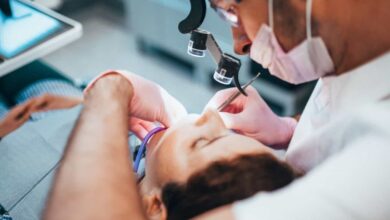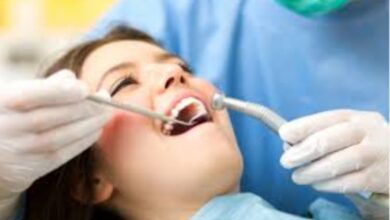Achieve a Radiant Smile with Teeth Whitening in Abbotsford: Your Guide to Brighter Teeth

Understanding Teeth Discoloration
Common Causes of Staining
So, what makes teeth lose their sparkle? Lots of things, actually. It’s not just about skipping brushing (though that’s a big part). Think about your daily habits. Do you start your day with coffee? Love a glass of red wine with dinner? These can really do a number on your enamel over time. And it’s not just drinks. Certain foods, like berries and soy sauce, can also contribute to staining. The good news? Teeth whitening in Abbotsford can help restore your smile, brightening your teeth and giving you back that confident glow.
Here’s a quick rundown:
- Food and Drinks: Coffee, tea, red wine, berries, and dark sauces are common culprits.
- Tobacco: Smoking or chewing tobacco introduces tar and nicotine, leading to stubborn yellow or brown stains.
- Poor Oral Hygiene: Not brushing and flossing regularly lets plaque and stains build up.
Impact of Lifestyle Choices
Our lifestyle choices play a huge role in the color of our teeth. It’s more than just what we eat and drink; it’s about how we take care of our mouths. For example, if you’re a smoker, you’re almost guaranteed to have some level of teeth discoloration. And even if you brush religiously, some habits are just hard to counteract. Think of it like this: you can wash your car every week, but if you drive through a mud pit every day, it’s still going to get dirty.
- Smoking causes significant staining due to nicotine and tar.
- Frequent consumption of staining beverages without rinsing can accelerate discoloration.
- Inconsistent oral hygiene allows stains to set in more easily.
The Role of Aging in Discoloration
Unfortunately, even if you have perfect habits, time takes its toll. As we age, the outer layer of our teeth, the enamel, starts to wear away. This reveals the dentin underneath, which is naturally more yellow. It’s just a natural part of getting older, like wrinkles or gray hair. While we can’t stop the clock, we can take steps to minimize the effects of aging on our smile.
Aging is a natural process that affects tooth color. Enamel thins over time, revealing the yellower dentin layer. This process, combined with years of exposure to staining agents, contributes to a less bright smile as we get older.
Benefits of Professional Teeth Whitening
So, you’re thinking about getting your teeth whitened? Good choice! While there are tons of over-the-counter options, professional teeth whitening has some serious advantages. Let’s break down why going to a dentist for this is often the best bet.
Immediate Results
One of the biggest perks is how quickly you see a difference. I mean, who doesn’t love instant gratification? With professional whitening, you can walk out of the dentist’s office with a noticeably brighter smile after just one session. Those whitening strips from the drugstore? They take weeks to show even a little change. Plus, the dentist uses stronger, more effective stuff than you can buy on your own.
Customized Treatment Plans
Everyone’s teeth are different, right? What works for your friend might not work for you. That’s where customized treatment plans come in. A dentist can assess your teeth, figure out what’s causing the discoloration, and tailor a whitening plan specifically for you. They’ll consider things like your sensitivity level and the type of stains you have to get the best possible results. No more guessing games!
Long-Lasting Effects
Okay, so you’ve got a bright smile. Now, how do you keep it that way? Professional teeth whitening tends to last longer than over-the-counter treatments. Sure, you’ll still need to take care of your teeth and avoid things that stain, like coffee and red wine (bummer, I know). But with proper maintenance and regular dental check-ups, your pearly whites will stay brighter for way longer. Think months, even years, instead of just a few weeks.
Professional teeth whitening isn’t just about making your teeth look good; it’s also about taking care of your oral health. Dentists can identify any underlying issues, like cavities or gum disease, before starting the whitening process. This ensures that your teeth are healthy and strong, not just white. It’s an investment in your smile and your overall well-being.
Types of Teeth Whitening Treatments
There are a few different ways to get your teeth whitened, and each has its own pros and cons. It’s not a one-size-fits-all kind of thing, so what works great for your friend might not be the best choice for you. Let’s break down the main options.
In-Office Whitening Procedures
This is usually the fastest and most effective way to see results. You go to your dentist’s office, and they use a pretty strong whitening agent, often with a special light or laser to speed things up. Here’s what to expect:
- Higher Concentration Whitening Gels: Dentists use stronger stuff than you can buy over the counter, so you get a more noticeable change.
- Professional Application: They protect your gums and soft tissues, so you don’t get any irritation from the gel.
- Faster Results: You can often see a big difference in just one visit.
Take-Home Whitening Kits
These are still provided by your dentist, but you do the actual whitening at home. They’ll take impressions of your teeth to make custom trays that fit perfectly. You then put the whitening gel in the trays and wear them for a certain amount of time each day, usually for a couple of weeks. Here’s the deal:
- Custom-Fitted Trays: These ensure the gel stays in contact with your teeth and doesn’t irritate your gums.
- Lower Concentration Gels: The gel is weaker than what they use in the office, so it takes longer to see results.
- Convenience: You can do it on your own time, in the comfort of your own home.
Over-the-Counter Options
You can find all sorts of whitening products at the drugstore, like whitening strips, toothpaste, and mouthwashes. These are the cheapest option, but they’re also the least effective. Here’s what you should know:
- Low Concentration Whitening Agents: They don’t contain much of the active ingredient, so they won’t make a huge difference.
- Generic Fit: Whitening strips aren’t custom-made, so they might not fit your teeth well.
- Gradual Results: You might see a slight improvement over time, but it won’t be as dramatic as professional whitening.
Choosing the right whitening treatment really depends on your budget, how quickly you want to see results, and how sensitive your teeth are. Talking to your dentist is always the best way to figure out what’s right for you. They can assess your teeth and recommend the best option to get you that bright smile you’re after.
Choosing the Right Teeth Whitening Provider
Finding the right dentist in Abbotsford, BC, for teeth whitening is a big deal. You want someone who knows their stuff and can help you get the smile you’ve always wanted. It’s not just about finding the cheapest option; it’s about finding a provider you can trust.
Evaluating Experience and Credentials
When you’re looking for a teeth whitening provider, experience matters. You want someone who has done this a bunch of times and knows how to handle any issues that might pop up. Here’s what to look for:
- Check their qualifications: Make sure they’re a licensed dentist and have any additional certifications related to cosmetic dentistry.
- Ask about their experience: How long have they been doing teeth whitening? How many patients have they treated?
- Look for before-and-after photos: This can give you a good idea of the kind of results they can achieve.
Reading Patient Reviews
Patient reviews can be super helpful when you’re trying to choose a dentist. They give you a real-world perspective on what it’s like to be treated by that provider. Here’s what to pay attention to:
- Look for patterns: Are there recurring themes in the reviews, both positive and negative?
- Consider the source: Are the reviews from a reputable website or just random comments on social media?
- Don’t rely on just one review: Read a bunch of reviews to get a well-rounded picture.
Understanding Treatment Options
Not all teeth whitening treatments are created equal. It’s important to find a dentist who offers a variety of options so you can choose the one that’s best for you. Here are some things to consider:
- In-office whitening: This is usually the fastest and most effective option, but it can also be the most expensive.
- Take-home whitening kits: These are more convenient and affordable, but they may take longer to produce results.
- Over-the-counter products: These are the cheapest option, but they may not be as effective as professional treatments.
Choosing a teeth whitening provider is a personal decision. Take your time, do your research, and find someone you feel comfortable with. After all, you’re trusting them with your smile!
Preparing for Your Teeth Whitening Appointment
So, you’ve decided to get your teeth whitened? Awesome! But before you jump into the chair, there are a few things you should know to make sure you get the best possible results and have a smooth experience. It’s not just about showing up; it’s about preparing your mouth and knowing what to expect.
Initial Consultation Process
First things first, you’ll have a consultation. Think of this as a meet-and-greet for your teeth and the whitening treatment. During this appointment, the dentist will:
- Talk to you about your goals. What shade are you hoping to achieve? What are your expectations?
- Explain the different whitening options available. They’ll go over in-office treatments, take-home kits, and help you decide which is best for you.
- Answer any questions you have. Don’t be shy! Ask about anything that’s on your mind, from potential sensitivity to how long the results will last.
Oral Health Assessment
Before any whitening happens, your dentist needs to make sure your mouth is in tip-top shape. This means:
- Checking for cavities. Whitening with untreated cavities is a big no-no.
- Examining your gums. Healthy gums are essential for a good whitening experience. If you have gum disease, it needs to be addressed first.
- Looking for any other oral health issues. Things like exposed roots or sensitive teeth can affect the type of whitening treatment you can get.
Post-Treatment Care Instructions
Okay, so you’re all prepped and ready to go. But before you leave the office, make sure you understand the aftercare instructions. This is super important for maintaining your bright new smile. You’ll likely get instructions on:
- What to eat and drink. Some foods and drinks can stain your teeth, so you’ll need to avoid them for a while.
- How to manage sensitivity. Some people experience sensitivity after whitening, and your dentist can give you tips on how to deal with it.
- How to maintain your results. This includes brushing, flossing, and possibly using a whitening toothpaste.
Preparing for your teeth whitening appointment is more than just showing up. It’s about understanding the process, addressing any oral health concerns, and knowing how to care for your teeth afterward. This way, you can ensure a safe and effective treatment that leaves you with a smile you’re proud to show off.
Maintaining Your Bright Smile
So, you’ve just invested in teeth whitening – awesome! Now, the real work begins: keeping that smile sparkling. It’s not just about the whitening treatment itself, but also about what you do afterward to maintain those results. Think of it like getting a new car; you wouldn’t just drive it and never wash it, right? Same deal with your teeth.
Best Practices for Oral Hygiene
Okay, this might sound obvious, but it’s the foundation for keeping your teeth white. Here’s the deal:
- Brush twice a day: Morning and night, no excuses. Use a soft-bristled toothbrush and fluoride toothpaste. Don’t brush too hard, though; you don’t want to damage your enamel.
- Floss daily: Get in between those teeth! Food particles love to hide there and cause problems. Flossing helps prevent plaque buildup and keeps your gums healthy.
- Use mouthwash: An antiseptic mouthwash can help kill bacteria and freshen your breath. It’s a good addition to your routine, but don’t rely on it as a substitute for brushing and flossing.
- Consider a whitening toothpaste: These can help remove surface stains and keep your smile bright, but they’re not a substitute for professional whitening treatments.
Foods to Avoid
Certain foods and drinks are notorious for staining teeth. It’s not about cutting them out completely (unless you want to!), but being mindful of your consumption can make a big difference.
- Coffee and tea: These are big culprits. If you can’t live without them, try drinking them through a straw to minimize contact with your teeth.
- Red wine: Another notorious stainer. Swirling it around in your mouth? Yeah, don’t do that if you want white teeth.
- Dark-colored sodas and juices: The artificial colors can stain your teeth over time. Opt for lighter-colored alternatives.
- Berries: While healthy, berries like blueberries and blackberries can also stain. Rinse your mouth with water after eating them.
- Sauces: Soy sauce, tomato sauce, and other dark sauces can contribute to staining. Use them in moderation.
Regular Dental Check-Ups
Don’t skip those dental appointments! Regular cleanings can remove plaque and tartar buildup that brushing and flossing might miss. Plus, your dentist can spot any potential problems early on. It’s recommended to go every six months, but your dentist might suggest more frequent visits depending on your oral health.
Maintaining a bright smile after teeth whitening is a commitment. It involves consistent oral hygiene practices, being mindful of your diet, and keeping up with regular dental check-ups. Think of it as an investment in your confidence and overall well-being. It’s worth the effort!
Cost Considerations for Teeth Whitening
Understanding Pricing Structures
Okay, so you’re thinking about getting your teeth whitened. One of the first things on your mind is probably the cost. It’s not always straightforward, because different clinics have different ways of pricing their services. Some might charge per session, while others offer package deals for multiple treatments. The type of whitening you choose (in-office, take-home kits, etc.) will also impact the price. Plus, the severity of your staining can play a role – more severe cases might need more intense or longer treatment, which can bump up the cost. Make sure you get a clear, itemized quote before you commit to anything. Don’t be afraid to ask questions about what’s included and if there are any potential extra charges.
Insurance Coverage Options
Now, let’s talk about insurance. Here’s the deal: most dental insurance plans consider teeth whitening a cosmetic procedure. That means they usually don’t cover it. Bummer, I know. However, it’s always worth checking your specific policy, just in case. Sometimes, if the discoloration is related to a medical condition or injury, there might be a chance of getting some coverage. But generally, you should plan on paying for teeth whitening out-of-pocket.
Financing Plans Available
So, what if the cost of teeth whitening is a bit more than you can handle upfront? Don’t worry, many dental offices offer financing plans to help spread out the payments. These plans can make the treatment more affordable by breaking it down into smaller monthly installments. Some offices might have their own in-house financing, while others work with third-party lenders. It’s a good idea to ask about the interest rates and terms of these plans before signing up. Also, some offices offer discounts or special promotions from time to time, so keep an eye out for those deals!
Paying for teeth whitening can feel like a big decision. It’s important to weigh the costs against the benefits of a brighter smile. Think about how it will make you feel, and whether it’s a worthwhile investment in your confidence and self-esteem. Look at all the options, and choose the one that fits your budget and your goals.




